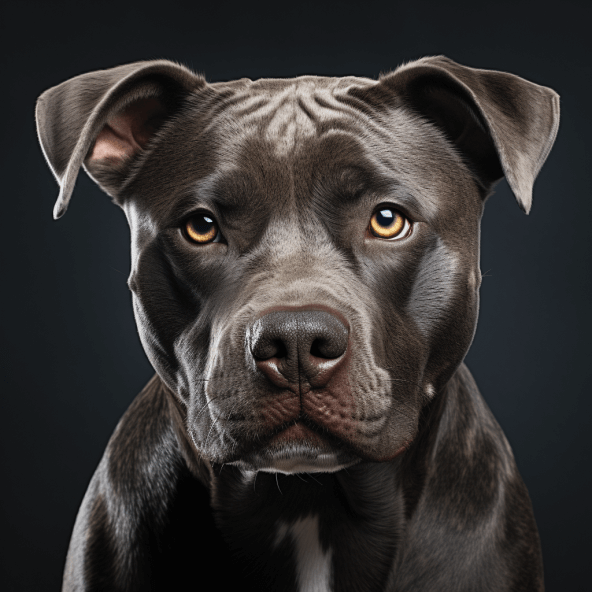What Colors Do Dogs See?
Ever wondered what the world looks like through the eyes of your beloved canine companion? Grab a moment to journey into the realm of a dog’s perspective, investigating the intriguing topic of “What Colors Do Dogs See”. This comprehensive guide promises to expand your understanding of visual perception in dogs, enhancing the connection between you and your four-legged friend. So let’s eradicate presumptions and elevate facts about how your furry pal perceives varied hues in their daily lives. Be ready for a unique exploration into the colorful canine world!
The Color Perception of Dogs
The world is a wondrous array of colors and hues for us humans, but what is it like for our canine companions? Do they take in the same visual spectacle or is it all one singular shade of grey to them? There are numerous misconceptions and facts about dog color perception and here we’ll dive into the science behind it.
Defining color perception
Color perception refers to the way in which an individual or a species perceives the different wavelengths of light, which we humans perceive as color. Just like sound, taste, and smell, color perception is part of an animal’s sensory realm – a crucial factor in survival, reproduction, and overall behavior.
Comparing human and canine color perception
Comparing color perception in humans and dogs reveals some stark contrasts. We humans have trichromatic vision, which means that we perceive three primary colors – red, blue, and green. Dogs, on the other hand, are dichromatic, indicating they only perceive two primary colors – blue and yellow. Consequently, the world for dogs is not as vibrant as the one we humans experience.
The role of cones in color perception
Within the eyes of both humans and dogs lie tiny light-catching cells called cones. These cones are the ones responsible for detecting color. Based on the number and types of cones present, different species can perceive different ranges of color.
Scientific Basis of Canine Color Perception
Delving deeper into the science of color perception, we encounter another pair of terms: rods and cones. Here’s what they mean and how they function.
Explanation of cones and rods in eyes
Inside the eyes are two types of photoreceptor cells: rods and cones. Rods help with low-light vision and motion detection, whereas cones are responsible for day vision and color perception. The ratio of cones to rods varies from species to species.
The difference between human and canine cones
Humans possess three types of cones, each sensitive to different wavelengths of light (short, medium, and long). This allows us to perceive a broad spectrum of colors. However, dogs only have two types of cones, limiting their color perception to shades of blue and yellow.
How canine cones decipher color
Dog cones are sensitive to two color ranges – blue and yellow. They can detect colors within these ranges, but they struggle with colors like red, which appear grey or brown to them. This is due to the absence of a certain type of cone that allows for the perception of such colors.
Debunking the Myth of Dogs Seeing in Black and White
The myth that dogs see only in black and white is as old as our relationships with these loyal creatures. So, let’s take a moment to address it.
Historical perspective of the myth
The idea that dogs see in blacks and whites emerged from early scientific research during the 1930s when technology was not advanced enough to definitively ascertain dogs’ color perception. This gray-scale theory led to the assumption that dogs had a similar color perception to people with achromatopsia, a condition leading to total color blindness.
Scientific refutation of the black and white myth
Modern science and technology have efficiently debunked the black and white myth. While dogs have fewer cones than humans, they are not completely devoid of them, which implies that they do see colors, although not as vividly as humans do.
Understanding grayscale Vs color perception in dogs
In the world of dogs, monochrome does not mean a lack of color but a less varied palette. To put it simply, dogs see fewer colors than humans, and their world is not as brilliantly colored, but neither is it just grayscale.
Colors that Dogs See
Let’s think about the colors a dog might perceive. Their color perception resembles that of human color blindness, especially red-green color blindness.
Identifying the color range
The color range perceived by dogs is primarily composed of blues and yellows. They cannot perceive red, and it appears as several shades of grey to them. The same applies to green, which dogs perceive as a form of yellow or grey depending on the darkness of the color.
Individual colors dogs can see
Within their limited spectrum, dogs can see different shades of yellow and blue. For instance, they can distinguish between light blue and dark blue or between light yellow and dark yellow.
Colors dogs cannot perceive
Vibrant colors such as green, red, pink, and purple are beyond a dog’s conception, as their visual system lacks the necessary cone receptors. These colors often appear as a form of grey or an ambiguous shade of yellow or blue.

Understanding the Canine Color Spectrum
A dog’s color spectrum might not be as broad as ours, but it’s still quite fascinating when we look at how they perceive different colors.
The spectrum range for dogs
Dogs mostly see a world of blues and yellows. The range of perceived colors spans from dark blue (almost appearing violet) to light yellow. Various shades of grey also figure within this spectrum.
Comparison to the human color spectrum
Compared to the lush spectrum of human color vision, the canine color spectrum can be described as ‘pastel.’ Their palette has less diversity and brilliance due to the absence of the red-green part of the spectrum that we enjoy.
How dogs perceive different shades within their spectrum
Dogs discern different shades of colors within their limited spectrum. For instance, light blue might appear as a white-ish blue, while royal blue may manifest as greyscale to them. They are capable of distinguishing light from dark.
How Dog’s Color Vision Affects their Behavior
Color vision plays a significant role in shaping dog behavior, from hunting and tracking to selecting toys. Here is a glimpse of how significantly color perception contributes to canine behavior.
Influence on hunting and tracking
The evolutionary setup of canine vision means that dogs are better equipped to perceive movement rather than colors. Because their ancestors were hunters, their vision favors identifying the movements of prey rather than their color.
Effect on toy preference
When it comes to toys, dogs may prefer those that are bright blue or yellow, as they can distinctly see these colors. A red toy might not appear as lively as it does to us.
Impact on interactions with humans and other dogs
Color vision may indirectly influence dogs’ interactions with humans and other dogs. Their capacity to understand various visual cues, shapes, and movements might be driven by their unique color perception.
Significance of Color Vision in Dog Training
While planning training or play sessions with dogs, it is crucial to keep their color vision in mind.
Choosing the right color for dog toys and accessories
Selecting the right color for dogs’ toys and accessories can make a difference in their interest and interaction levels. Because dogs can perceive blue and yellow more vividly, toys of these colors are more likely to engage them.
Role of color in obedience training
When training dogs, colors can play a pivotal role. Objects of more visible colors can draw a dog’s attention and can be used effectively to teach various commands and obedience routines.
Impact of color vision on agility training
In agility training, target objects and obstacles often are made in the colors dogs can see best – yellows and blues. This ensures they can see and follow the course accurately and quickly.
Color Vision Deficiencies in Dogs
Just as humans are susceptible to vision problems, some dogs suffer from color vision deficiencies, sometimes referred to as dog color blindness.
Understanding color blindness in dogs
Dog color blindness is a condition suggesting a more severe color perception deficiency than the typical canine dichromatic vision. It might result in mixed-up perceptions of blues and yellows or an even narrower color spectrum.
Symptoms of color vision deficiencies
While it’s hard to identify color vision deficiencies in dogs, some symptoms might include confusion between different colored objects and difficulty in locating brightly colored objects amidst foliage.
Medical and genetic causes behind color vision problems in dogs
Color vision problems in dogs not only arise from age-related deterioration but also from certain genetic defects and certain diseases that harm the functioning of the cones.
Breeds and Variations in Color Perception
Just like humans, not all dogs are created equal when it comes to color vision. Here’s a look at how it varies.
Difference in color vision among dog breeds
Some breeds have more finely-tuned color perception than others, depending on their primary function. For instance, hunting dogs usually possess sharper color vision than the breeds primarily used for companionship.
Impact of age and health on color perception
Age, much like in humans, does affect a dog’s color perception. As dogs age, their vision and color perception might become cloudy or discolor due to cataracts or other eye diseases.
Case studies of color perception among different breeds
Case studies reveal interesting variations. Gun dogs like Labradors tend to have better color vision compared to decorative breeds like Maltese, which stems from the hunting origins of such breeds.
Advanced Research on Dog’s Color Vision
The study of canine color vision is an ongoing field with constant advances. Here’s a peek into future paths.
Latest studies on canine color perception
Some recent studies indicate that dogs might not only be able to see more shades of blue and yellow than previously thought, but they might also have a dim understanding of other colors on the spectrum.
New discoveries about dog’s color spectrum
Recent research has unveiled that some breeds can perceive hints of the color spectrum typically visible to humans. However, these new discoveries are yet to be confirmed through extensive studies.
Future research directions for canine color vision
Future research plans to understand more about the extent of dogs’ color vision, possible breed variations, and the ways in which their visual perceptions can be enhanced to improve their quality of life.
So there you have it, a dive into what colors dogs see and the impact of their color perception on their various activities. While their color vision may not be as vibrant and varied as ours, it’s definitely not just black and white!







